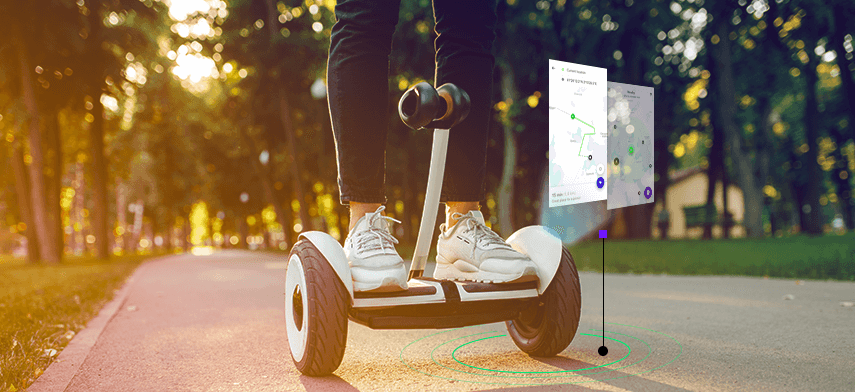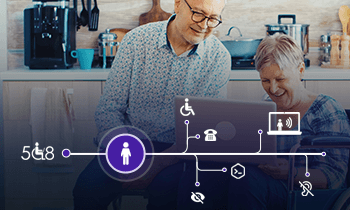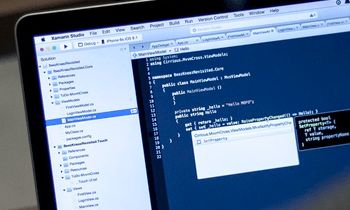In our previous blog, we discussed how micro-mobility technology is evolving day by day. Transportation companies are actively participating in providing micro-mobility programs to their customers, which would provide them easy commuting, lesser congestion, and greener surroundings. Now, to implement these programs and take micro-mobility a notch higher, various technologies are being implemented while manufacturing. The two key technologies discussed in this blog are machine learning data analysis. Let us talk about them and their impact on the industry.

How Data and Machine Learning are Connected?
As micro-mobility is a current buzz word in the transportation industry, there are certain terminologies and technologies that need a detailed explanation to understand the concept and industrial developments better.
Micro-mobility comprises many innovative technologies, machine learning is one of them. Machine learning is a part of artificial intelligence that enables the machine to learn from the collected data in the past, automatically. It does not require any explicit programming. The machines are self-taught and respond according to the changes in the data pattern. This is known as data-driven technology in transportation, where the machines are interconnected and exchange data among themselves, analyze them, and make the next move. Thus, it would not be wrong to say that machine learning and data analysis go hand-in-hand in the micro-mobility industry.

An example of data analysis in micro-mobility is: One picks up his e-scooter from a place using the app installed on his phone. A fraction of seconds later, the databank gets a signal about the movement of the vehicle. It tracks the starting position, route is taken, speed, time, the destination where the scooter was stopped, etc. Now this entire data gets logged, and used for future purposes. This helps in reducing the congestion on the roads, by displaying the traffic intensity on the particular roads, which road to take, and GPS trackers simultaneously track the other vehicles as well, to keep a smooth running of vehicles on road.
Now Let Us Further Understand How Machine Learning Helps in the Growth of Micro-mobility Service:
1 Fleet Management
Since micro-mobility is currently in its budding stage, it is very important to manage the fleets of cars, bikes, and scooters run by the service providers. In addition, it also requires a business model that would focus on profits and ROI. On the basis of complications in the urban cities and rising populations, the availability of the vehicle at the right time and the right location is an important aspect of micro-mobility service. This calls for a blend of data analysis and expert in micro-mobility that would have a detailed insight into the current status of the congestion in the urban cities.
2 Preventing Accidents by Collecting Vehicle Data
Features such as automatic braking system, lane-keeping system, rear cross-traffic alert are some of the recent innovations embedded in the vehicles to avoid or reduce the number of mishaps on the roads. This also aims to control the traffic. These technologies read the surrounding and vehicle data and give a signal accordingly. For example, if you are riding a bike at a high speed wherein another vehicle comes near you, the sensors sense the object in the proximity and give you the signal to slow down. The same theory is applied while backing up the vehicle from parking. In fact, if you cut the lane and enter in the other zone, say, pedestrians, the machine will detect the changes and will notify the rider to check the lane and control the speed to prevent accidents.
3 Launching Startup
Artificial intelligence and machine learning play an important role in designing the best-suited business model for a startup. Using data analysis, the cost structure, area infrastructure, fleet requirement, features in the app, everything is decided based on the data report and predictive analysis. This helps micro-mobility programs launched by the companies to flourish in the market.
4 Rebalancing and Repositioning Process for Optimum Outputs
Rebalancing: As discussed in our previous blog, the companies dealing in micro-mobility need to focus on the ROI and profits as well, along with customer satisfaction and good user experience. Rebalancing is just the same: to satisfy the maximum customers and optimizing the profits.
Now, with the help of artificial intelligence, the development team and the managers can make a well-strategized decision about the number of vehicles in a fleet, type of vehicle needed in a particular area, which type of crowd can be targeted to generate maximum profit, etc. This also helps in keeping a track of events and occasions held in the entire year, so as to minimize the congestions during those days.
Repositioning: Have you ever thought, how dockless biking functions? Or how you get a self-driving vehicle at your door-step when needed? This entire process is known as repositioning. It aims to provide vehicles to the places where they are needed. It also picks up the damaged, or broke bikes and scooters, and replaces them with the working ones. In addition, they check for the battery capacities in these vehicles and get them charged before the user needs them to commute again.
All this happens with the help of machine learning. Once the city gets silent and the number of vehicles goes to negligible at night, the drivers pick up the scooters and bikes that are damaged and need repairing. These bikes are then replaced with fresh ones. Companies like Tortoise that aims to become an operating system for electric vehicles want to reposition and relocate the required vehicles on time with minimum hassle and inconvenience. They use autonomous technology along with human help to accomplish their tasks.
5 Better Customer App and Predictive Maintenance
With the help of data-driven technology and sensors the information about vehicle performance, wear, and tear, parts like tires, engine performance, everything can be logged. And based on this, the operation and maintenance team can decide whether the vehicle needs repair or not. This is known as predictive maintenance.
Similarly, based on user reviews, ratings, reactions, and usage one can also track the flaws in their app. These flaws can be strategically resolved by updating and adding the features as per the customer requirements and area where the fleet is.
6 Finding the Lost/Stolen Vehicle
Just like other factors sensors, trackers, and machine learning can help in finding the lost or stolen vehicle. With the sensors attached in the vehicle, it becomes easy to track the route followed during the theft. It also notifies the user if one accidentally or occasionally takes a different route, to make sure if the vehicle is handled by the same user or not.
7 Finding a Charging Station
With the increasing number of e-bikes and scooters, along with the rising trend of shared micro-mobility, there is a dire need for charging stations at short distances to avail charging facilities for the vehicles. Machine learning now reads the battery capacity of the vehicle and based on that, indicates the potential distance that can be covered and the charging stations that fall in the route of commute.
Apart From These, the Integration of Machine Learning in Micro-mobility Operations Holds a Lot of Scope in the Future as Well. Let Us Have a Look at Them:
Seeing Structural Defects
Reality modeling is the next big thing in artificial intelligence, which blends machine learning and deep learning to recognize the images. This helps in comparing the previous images of the vehicle parts with the current ones and figure out if there are any defects. Currently, Bentley System is working on implementing this technology. This task is performed usually by mechanics or engineers as of now, which will be replaced by a virtual system. It is aimed to save time, improve customer satisfaction, and maintain the flow of vehicles.
Visualizing Benefits
In this case, a 3D model of the updated roads is designed to see how the traffic performs and reacts to it through artificial intelligence and data analysis. So, in case, if a road demands to be widened or reconstructed, one can first visualize a 3D image and analyze the benefits it would reap when putting to reality. It can also consider the surrounding buildings, hospitals, pedestrians, etc that are the potential aspects of regulating the traffic. This technology plans to make use of drone service also to have an aerial and detailed look of the area before taking the plan ahead for implementation.
Others
Neural networks, computer vision aided by ML are some of the futuristic technological advancements being conceptualized by some of the giants in the transportation and infrastructure industry. It is estimated that neural networks would learn the objects from the images captured and recognize them in the future. The technology also aims to discuss and improve profitability and productivity. This would surely contribute, in keeping the environment clean, save time, and maintenance cost after installation and implementation.
Wrapping up,
Artificial intelligence in transportation and applications machine learning has a huge scope in the forthcoming years. With proper skills and strategies of development, these technologies are likely to take the market graph towards elevation. Though the micro-mobility industry is yet on a nascent level, it holds a huge potential for growth. Moreover, with the surging traffic, increasing population in the urban areas, and urbanization itself, the need for a well-organized transport system and sufficient availability of vehicles are not going to decrease anytime soon. In addition, this has given a new ray of hope to shared-mobility and aims to reduce the number of personal vehicles on road.

Author's Bio

Shoeb Ahmad, with an experience of 22 years in Digital World, heads Digital Marketing at Mobisoft Infotech. He has a rich experience in SEM, SEO, Social Media & other verticals of Digital Media. He also has been a consultant for a variety of industries, enterprises & startups. He loves reading & traveling. He often writes on various forums since he believes ‘Knowledge increases by sharing.’


